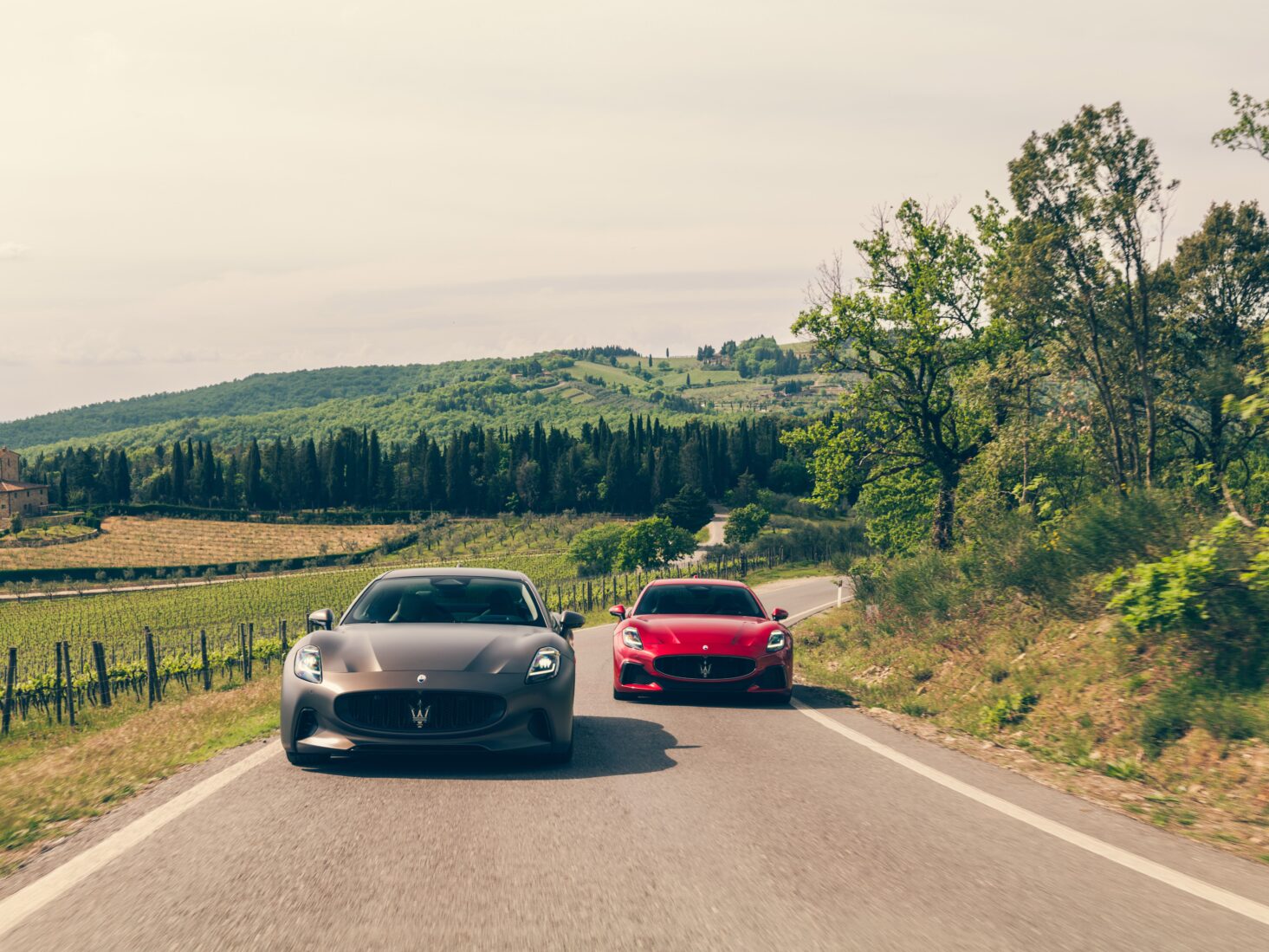
Maserati GranTurismo Folgore: On the road with the Italian marque’s first electric car
Launching its next-gen GranTurismo in both V6 and EV form (the company’s first ever plug-in), Maserati pays deference to its grand-touring past while providing a glimpse into its future
Few carmakers can confidently lay claim to single-handedly popularising a new type of sports car. But when Italian carmaker Maserati rolled out the beautifully simple A6 1500 Gran Turismo in 1947, it changed the game. Designed by the definitive Italian styling house, Pininfarina, it was the first road-going production car that Maserati had manufactured and introduced to the market the idea of a grand tourer – a comfortable cruiser that took performance seriously.
Over the past 75 years, Maserati’s grand tourer bloodline has remained in rude health, spawning iconic cars including the Ghibli, Bora and 3200 GT, each powered by a burbling V8 engine. The next chapter in that illustrious grand tourer story is significantly softer spoken. To celebrate the marque’s 75-year milestone, I’ve been invited to Modena, home of the brand and a city that was once described to me as a place of “slow food and fast cars”.
Specifically, I’ve come to the city’s Palazzo Ducale di Modena, where lies a pristine 1947 A6 1500 Gran Turismo, finished in silver, with its smooth coach-built body catching the evening sun. Alongside is an immaculately-dressed gentleman in chinos, shirt, tie, jacket and a tiny Trident badge proudly sitting on his lapel. “I have had ‘Trident Fever’ for as long as I can remember,” says the chap, grinning and speaking in Italian. “I spent 38 years as a Maserati employee and 22 years as a consultant – and I still go there every afternoon.”

Having started working for the company in 1951, the former employee recalls when Maserati’s first production car rolled off the factory line. “People wanted these stylish cars that could drive on roads at lower speeds, for longer, with all the focus on design. Our customers came from all over the world. They included Elizabeth Taylor and the Shah of Persia.”
As per Maserati’s racing cars, the A6 1500’s tubular chassis was light and strong, while its elegant interior featured leather, dashboard instruments and a clock built into the glovebox lid. The clutch and brake pedals were designed in the shape of Maserati’s trident logo. On the outside, its smooth, simple and sophisticated bodywork became the benchmark for sports car design throughout the 1950s and ’60s. “Maserati has never been about decoration or unnecessary lines,” says Klaus Busse, head of design. “It’s about absolute purity and proportion.”
At the heart of this early effort from Maserati was a 1500-cc overhead cam inline six, fed by a single Weber carburettor. Output was a modest 65 horsepower, but its lightweight coachwork kept the weight below 800kg, making the car well-suited to racing. While its plucky little combustion engine was cutting edge at the time, its modern-day descendants are powered by something altogether different.
“And here we are with the new generation,” says Busse the following morning, in the same, quaint Italian square, only the A6 has been replaced by a swarm of new, brightly-coloured GranTurismos. Beside Busse sits a mix of models ranging from the V6-engined Trofeo, launched in April 2023, to the all-electric Folgore, which will take to the tarmac in 2024 and which is set apart by its more aerodynamic grille, rims and rear valance.

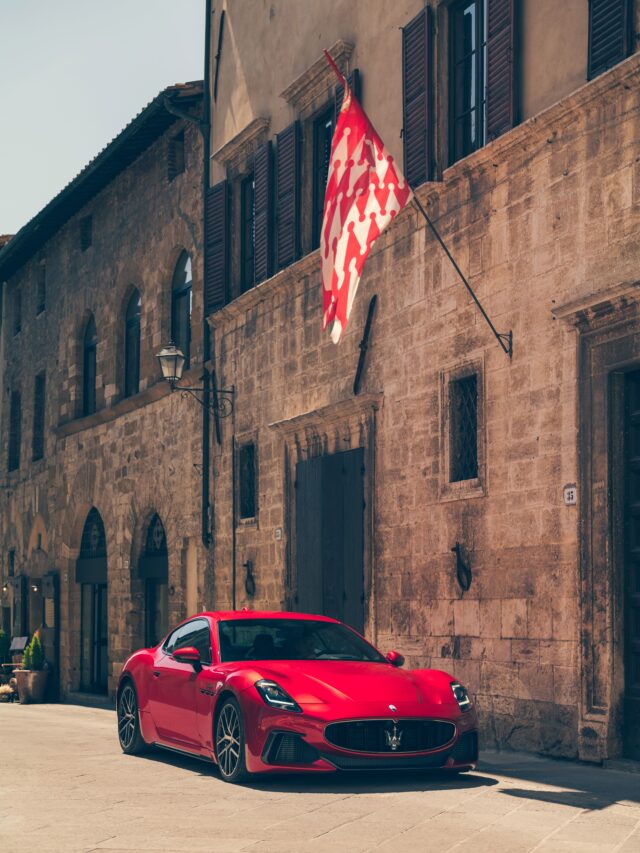
“If you can get away with something smaller, get an MC20. If you have a dog, get a Grecale, but for everything else, there’s the GranTurismo,” says Busse, with a smile. Boldly revealing the combustion-engined and battery-powered GranTurismo at the same time, Maserati is confident in its ability to engineer a car that lives up to the high expectations of the ‘old world’ while providing a fully-formed glimpse into the future.
“This idea of combining four full seats with supercar performance is absolutely unique in the market,” says Busse, remarking on the latest GranTurismo’s ability to continue the grand tourer legacy of transporting four full adults in comfort, at speed. “When you want to drive a Maserati, it shouldn’t be an aesthetic choice whether you go combustion or electric, so there are only small visual differences between the two.”
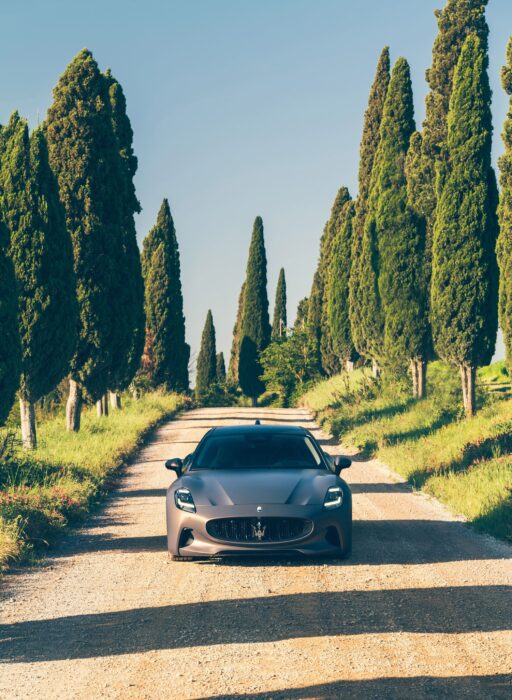
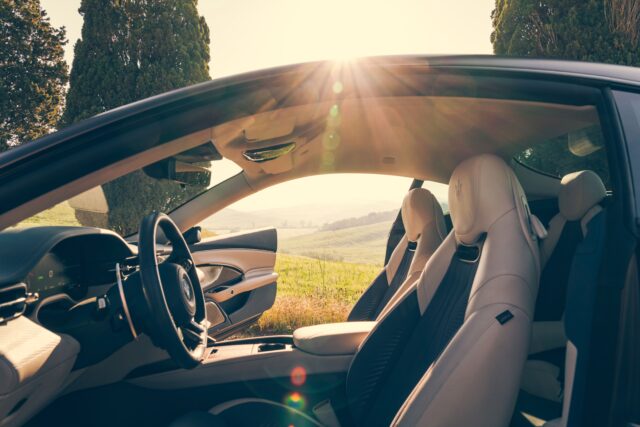
That may be true, aesthetically, but on a 350-mile road trip from Modena through Tuscany and on to Rome the difference in performance between the two models is marked. Starting out in the Folgore, the electric GranTurismo, we dart through the traffic and head south of Modena, down past Bologna and up into the Tuscan hills. Equipped with three 300kW motors, the Folgore’s 92.5 kWh battery can produce close to 900kW, equivalent to 750bhp. As a result, the Folgore rockets from nought to 62mph in just 2.7 seconds, and carries on to a top speed of 200mph.
Selecting the default ‘GT’ mode for most of the motorway, the setting releases 80 per cent of the car’s power, meaning the Folgore has more than enough spark when pushed, without instantly bleeding the battery dry. ‘Sport’ sees 100 per cent of the power delivered, sharpening things up; ‘Corsa’ sees nuclear levels of power delivered to all four wheels. Delivering stratospheric levels of pace in near silence is the Folgore’s party trick – one that soon takes its toll on both your body and the battery.
On the gentle, twisting B-roads of Tuscany, the Folgore is as comfortable, smooth and near-silent as any well-engineered EV. Despite its reputation for shoehorning raucous V8s into sculpted grand tourers, Maserati’s first shot at an EV is hugely convincing, particularly with its stated max range of 280 miles.
Inside, the GranTurismo stands apart as a comfortable four-seat super-cruiser. Despite its relatively dainty size, its clever use of space means there’s room to spare in the cabin. Unlike with many of its rivals, large adults can actually sit in the backseats. The Maserati design team has ensured that the GranTurismo steers clear of any unsightly iPad-like slabs, opting instead for a curved infotainment panel. With the climate controls on the bottom half and everything else on the main panel above; it’s a neat solution that saves the whole dashboard from becoming one digital monolith. Take note, Tesla.
The next morning starts with a bang – the hearty sound of the Folgore’s V6, three-litre, mid-front-mounted sister, to be precise. Capable of producing 543bhp, the Trofeo will cut to 62mph from standing in 3.5 seconds. After a day of driving in near silence, the rumble of a V6 is most welcome. The end of the road for the combustion car might be nigh, but cars like the Trofeo have spent 100 years in the making.
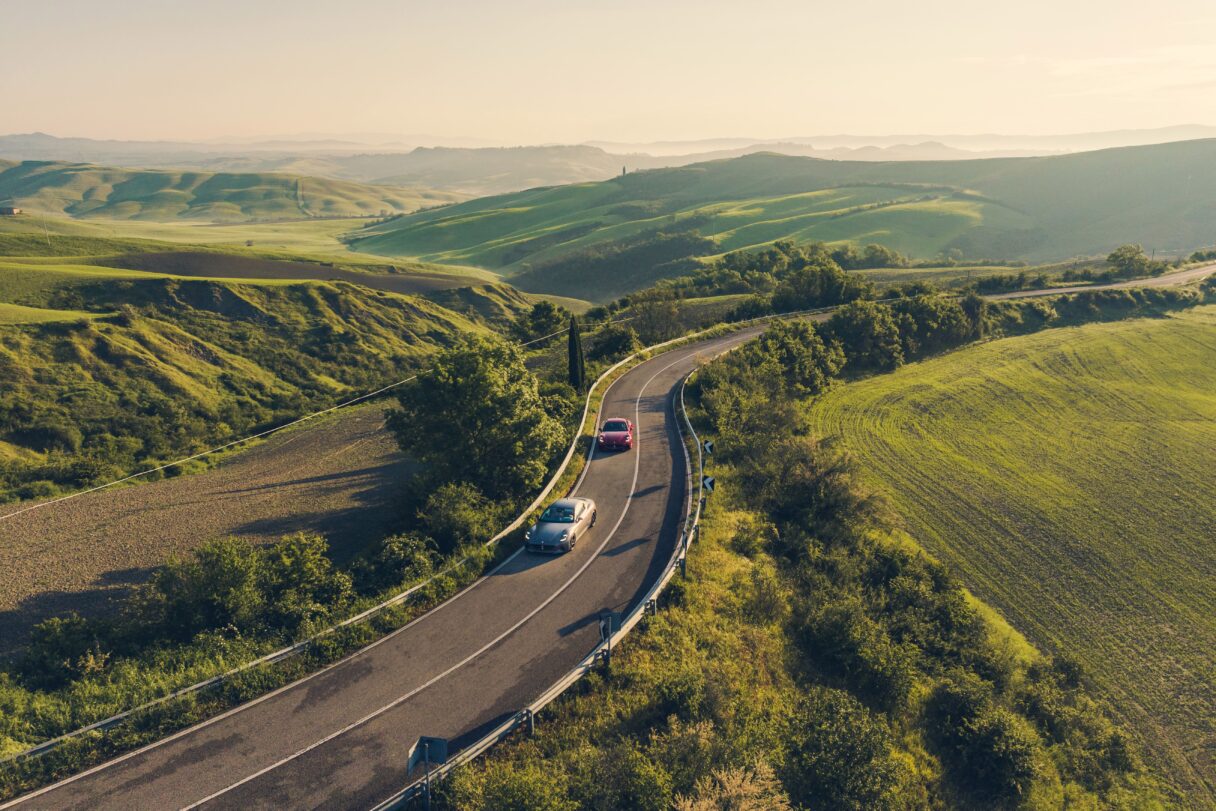
Maserati’s ‘Nettuno’ engine is one of the most efficient around, thanks to some nifty, patented pre-chamber combustion technology that’s derived from Formula One cars. In fact, the Nettuno is the world’s most power-dense production combustion engine. On the road south to Rome, the Trofeo is a wonderfully-balanced and beautifully-sounding machine, largely due to its front engine being mounted as far back and as low down as possible. Sharing the same driving modes as the Folgore, ‘Corsa’ is again the option if you’re looking for edge-of-your-pants thrills.
For a marque that spent years being leapfrogged by its rivals, Maserati has come out fighting. The new GranTurismo can easily go toe-to-toe with the Ferrari Roma, Porsche 911 Turbo and all-electric Taycan Turbo S. Given that the brand’s reputation for road cars was forged on the back of its original grand tourer, the GranTurismo would have been a hard nut to crack. Instead, the marque has hit bullseye. With both the electric and combustion versions, Maserati has paid homage to its grand history while delivering a statement of intent for its future.
Visit maserati.com
Read more: The Bentley Flying Spur Mulliner is as good as it gets






